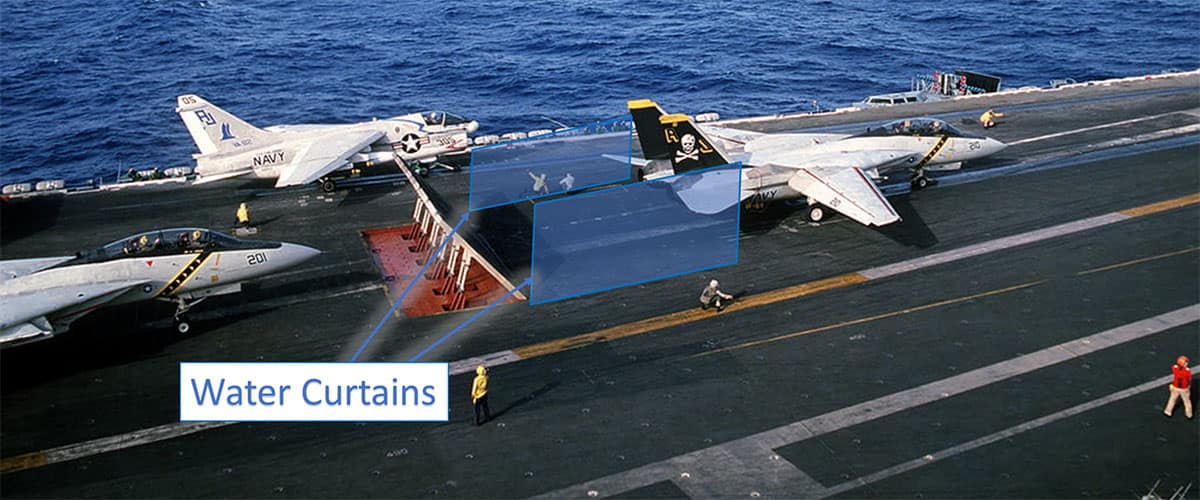Can Bubbly Water Reduce Fighter Jet Noise? Embry-Riddle Researchers Investigate

Bubbly water is more than just a refreshing drink. Curtains of air-charged water can potentially be used to blunt the powerful and damaging noise caused by fighter jets taking off from aircraft carriers, according to research underway at Embry-Riddle Aeronautical University.
When fighter jets launch, “the sheer energy of the high-speed exhaust measures more than 140 decibels,” said Dr. Reda Mankbadi, professor of Aerospace Engineering. The sound, Mankbadi explained, is louder than a rock concert and intense enough to cause permanent hearing damage in seconds.
These strong blasts of sound can also interfere with critical shipboard sensors and communications, Mankbadi said, “eroding mission readiness and operational effectiveness.”
In research funded by a half-million-dollar grant from the Office of Naval Research, Mankbadi is investigating how fountain-like water curtains might be used to dampen, so to speak, the deafening roar of a fighter jet taking off. Similar technology has been used in undersea exploration to help protect sea life, Mankbadi said.
Mankbadi’s collaborators include Dr. Vladimir Golubev, professor of Aerospace Engineering at Embry-Riddle, and Dr. Sam Salehian, an assistant professor at Tuskegee University who earned his Ph.D. at Embry-Riddle in 2020 with Mankbadi as his advisor.
The system would work by forcing water up into the air through microjets at the deck’s surface, or by forcing the water down from suspended pipes like a shower on either side of where the jet would take off. The bubbles in the water are formed from the jet plume pushing through the ambient air, Mankbadi said, creating an air-water mixture.
The moment a fighter aircraft starts to take off, Mankbadi said, “a shroud of air-charged water springs to life on the deck, its millions of bubbles sparkling like pearls. When the jet’s loud exhaust growl surges across the barrier, the bubbles shatter and diffuse the sound waves into quieter waves.”
After the noise subsides, the water curtains are deactivated. “Brilliantly simple but profoundly effective, this temporary bubbly shield can be modified to fit any carrier-based aircraft and deck arrangement, delivering firm noise protection only when and where it is required,” Mankbadi said.
The project grew out of Salehian’s Ph.D. research on using non-aerated water to reduce rocket launch noise. During that research, Salehian and his team noticed that when water particles formed a mist, they acted like a curtain that, when hit by acoustic waves, caused them to distort and dissipate.
“This observation led to investigating applying this approach as a novel technology for noise mitigation for aircraft carrier decks,” Salehian said.
Dr. Jim Gregory, dean of the College of Engineering, praised the research as “a creative approach to solving the technical challenge of jet noise. ” Dr. Mankbadi and his team “exemplify the smart, curious and innovative way that Embry-Riddle faculty make this world a better place,” he said.
After the research team conducts computational modeling on the technology, they will collaborate with researchers at Virginia Tech to begin physical experimentation, Mankbadi said.
“If this novel technology is found feasible and is optimized,” Salehian said, “it can provide a noise mitigation solution without the need to apply any redesign on aircraft or engine configurations.”

 Michaela Jarvis
Michaela Jarvis